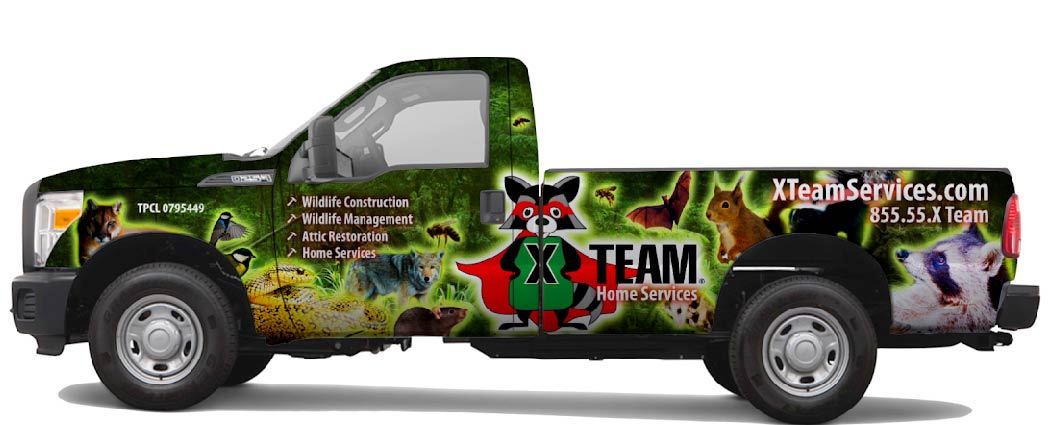Products
X Team has spent many years and worked on thousands of cases of working on houses and buildings.

Chimney Cap
Chimney Crown
Furnace
Turbine
Louver Vents
Solar Vents
Fan Vents
Roof Exhaust
Exhaust Vents
Roof Vents
Roof / Flashing
Vent Pipes / Plumbing Stacks
Fascia Boards
Dormer Eaves
Gutters / Flashing
Deck / Patios
Foundation Vents
Dryer Vents
Construction Gaps
Valleys
There are two basic types of valleys: open and closed.
Open Valleys
Closed Valleys
Many roofers overlook the details required for a proper closed style valley application. As with all the detailed areas of your roof, it is important to know the details of each valley style in order to make an educated decision for a wildlife remediation program. Do a very good inspection on wood and tile roofs.
Ridge Vents
Wood Siding
Hardie Siding
This siding seems to be a rising trend in the industry lately. It’s a product that lasts, comes in a wide variety of textures and colors, and it’s affordable. The benefits extend beyond those factors, and when it comes to hardie board siding, there is a long list of pros.
- Longevity:Most hardie board siding comes with a 50-year, limited transferable warranty. This siding is completely rot and insect resistant and can even handle salt spray from the ocean.
- Appearance:Hardie board siding can be made to mimic just about any other siding material, including wood lap boards, cedar shingles, and wood shake siding. Color options are virtually unlimited. These colors are accompanied by a 15 year warranty on the finish.
- Fire Resistance:Hardie board siding is 90 percent sand and cement which makes it fire-resistant. Case in point, a St. Paul Minnesota house fire torched two fire trucks parked 60 feet away, but the cement board siding home next door, 50 feet away, remained unscathed.
- Storm Resistance:Whether you’re looking for a siding material that can withstand the next Katrina, or one that can fend off the next summer hailstorm without sustaining damage, cement board siding is a proven commodity in the weather department.
Spanish Tile
Roof tiles are ‘hung’ from the framework of a roof by fixing them with nails. The tiles are usually hung in parallel rows, with each row overlapping the row below it to exclude rainwater and to cover the nails that hold the row below. There are also roof tiles for special positions, particularly where the planes of the several pitches meet. They include ridge, hip and valley tiles. These can either be bedded and pointed in cement mortar or mechanically fixed. When they are not totally sealed we run into issues with rodents and wildlife getting in around the ridges, hips and valleys.
Asphalt Shingles
Wood Shingles
Metal Roofing: Metal beats out conventional roofing materials on a number of different counts:

Expected life
Weight
Some types of metal roofing materials may be applied over an existing roof without the need for tear-off or additional structural support. In fact, if you’re building a house or an addition, you can often downsize or reduce the number of roof support members.
Speed & ease of roofing installation
Fire resistance
Heat conduction
Slate Roof
Slate roofing tile has some huge upsides, mostly due to the fact that it’s a natural stone product, giving it a unique, beautiful appearance, and the longevity that slate is famous for. Here’s a list of the most popular reasons homeowners choose to install slate roofing tiles on their home.
- Appearance— First and foremost, homeowners are drawn to slate because of its beauty. There simply isn’t a roofing material on the market that has a classier, more celebrated appearance. Furthermore, slate roofing tiles offer more choices than most homeowners realize, available in varying sizes and thicknesses, as well as a wide range of colors, including gray, green, purple, black, red, and mottled tiles that sport several colors mixed together.
- Longevity— Slate roofs can and should be routinely built to last at least a century. In fact, 150 years is a reasonable expectation of a roof’s longevity if the roof is properly constructed. That’s a big plus in an industry where many roofing systems are lucky to last 20 or 30 years before needing replacement.
- Fire Resistance — Slate roofing is one of the most fire resistant roofs that exist. Unlike many other roofing materials, slate tiles themselves are completely fire proof. That’s a big advantage when it comes to preventing fires caused by air borne sparks from fireworks, wildfires, or from adjacent house fires.
- Environmentally Friendly— Roofing waste accounts for more than 5 percent of the total waste sent to landfills across the nation every year. Since the majority of that roofing waste can be attributed to asphalt shingle roofing that needs replacement every 20 to 30 years, it’s easy to see the positive environmental impacts of installing a roof that is going to last 100 years or more.
Attic Restoration
Debris Removal
Dumpster Rental
You can use a dumpster when you are cleaning out an attic or cleaning out a garage.
Disinfect & Deodorize
Flea, Tick Mange & Mite Treatment
Ticks can cause diseases that can lead to significant health issues such as debilitating illness, paralysis and even death. It only takes one tick to spread disease, so continuous protection is critical to help reduce the risk of infection.
Mange and Mites can cause severe itching and a variety of problems that can impact a domestic animals health if left untreated.
Every house should be treated for these insects after a wildlife infestation.
Fog Attic or House / Building: The Attic & Ductwork runs throughout an entire house and the ductwork is the main component of a ventilation system. Naturally, it is important to keep the attic & ducts clean and disinfected to prevent the spread of germs and spores through the air. Rodent and Wildlife droppings are the primary concern with attics & ducts, as it can easily build up in these isolated areas and can be tough to eradicate and can be deadly. The proper application to disinfect and deodorizer is done through the use of a machine that can coat the entire lining of a duct and attic walls and floors.
Attic Tent
Attic Ladder
FINANCING RESOURCES
Financing for home services is available through third parties
What our customers say:
Project: Repair or Partially Replace Wood or Fiber-Cement Siding
Did a very good job. Very professional and pleased with the work they did.
